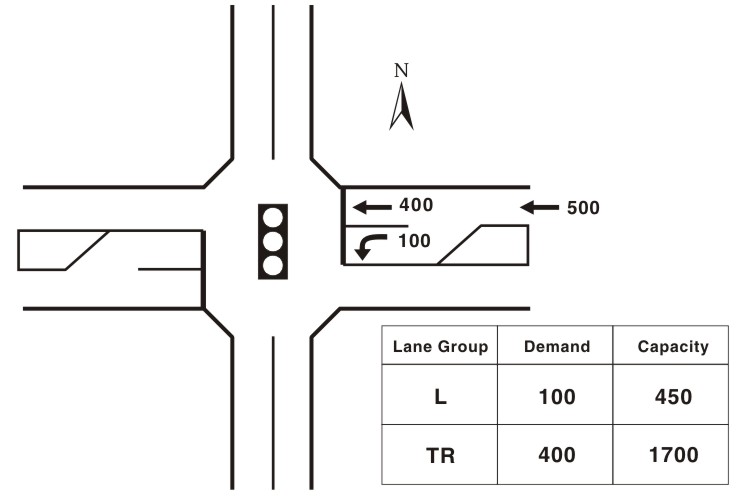|
Percent turns from exclusive lanes must be taken into account to properly apply the planning-level analysis procedure for an urban street. Because this parameter is frequently misunderstood and misapplied, it is worthwhile to provide a more in-depth discussion. First, let's revisit the reason that the percent-turns-from-exclusive-lanes parameter is even needed. It begins from the premise that the function of an urban street is to serve through traffic. In the HCM, average speed is the performance measure used to characterize the operating status of an urban street. Therefore, the computed average control delay for the through-traffic lane group is one of the components that determines the level of service for the urban street. Whenever exclusive turn lanes are provided at one of the signalized approaches on an urban street, then there will be more than one lane group and so something needs to be done to reconcile the total approaching volume, which includes vehicles that will be using the exclusive turn lane(s), with the computed capacity for the through-traffic lane group. An example will help to clarify this point. Consider the intersection shown below, where the east leg of the signalized intersection has a total approaching volume of 500 veh/h with two lane groups: one lane group serves 100 veh/h in an exclusive left-turn lane, and the other lane group serves 400 through-and-right-turning veh/h. We would make an obvious mistake if we assumed the computed capacity of the single through-traffic lane group had to serve the entire approach volume of 500 veh/h, because we would be ignoring the fact that 100 veh/h of this approach volume will be served by a separate lane group. Therefore, the percent-turns-from-exclusive-lanes parameter is used in the HCM procedure to reduce the total urban street approach volume at intersections where exclusive turn lanes are provided.
In this case, we can see that the left turns equal 20 percent of the total approach volume. Therefore, the analyst would define the percent-turns-from-exclusive-lanes to be equal to 0.20, and the procedure would estimate the volume to be served in the through-traffic lane group to be equal to
where vTR = adjusted through-traffic lane group volume (veh/h); vT = original through-traffic lane group volume (veh/h); and PTEL = percent-turns-from-exclusive-lanes parameter. In this example, vTR is equal to 400 veh/h, vT is equal to 500 veh/h, and PTEL is equal to 0.20. The percent-turns-from-exclusive-lanes concept assumes that the through movement is always the critical movement on each approach and that the turning traffic is fully accommodated by the signal timing plan. While this is generally a reasonable assumption, some judgment must be used in applying this concept to ensure that the assumption is valid.
|
